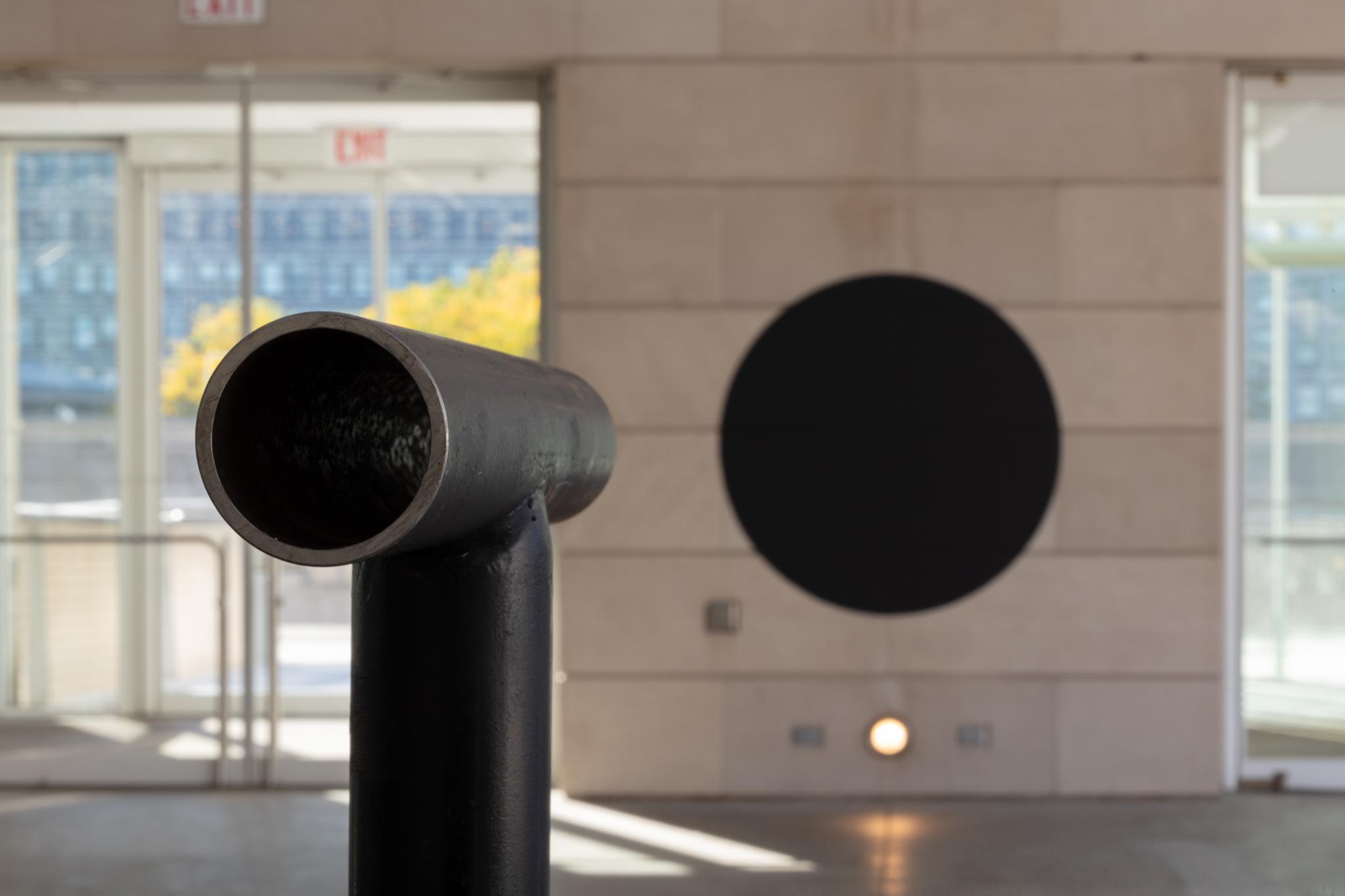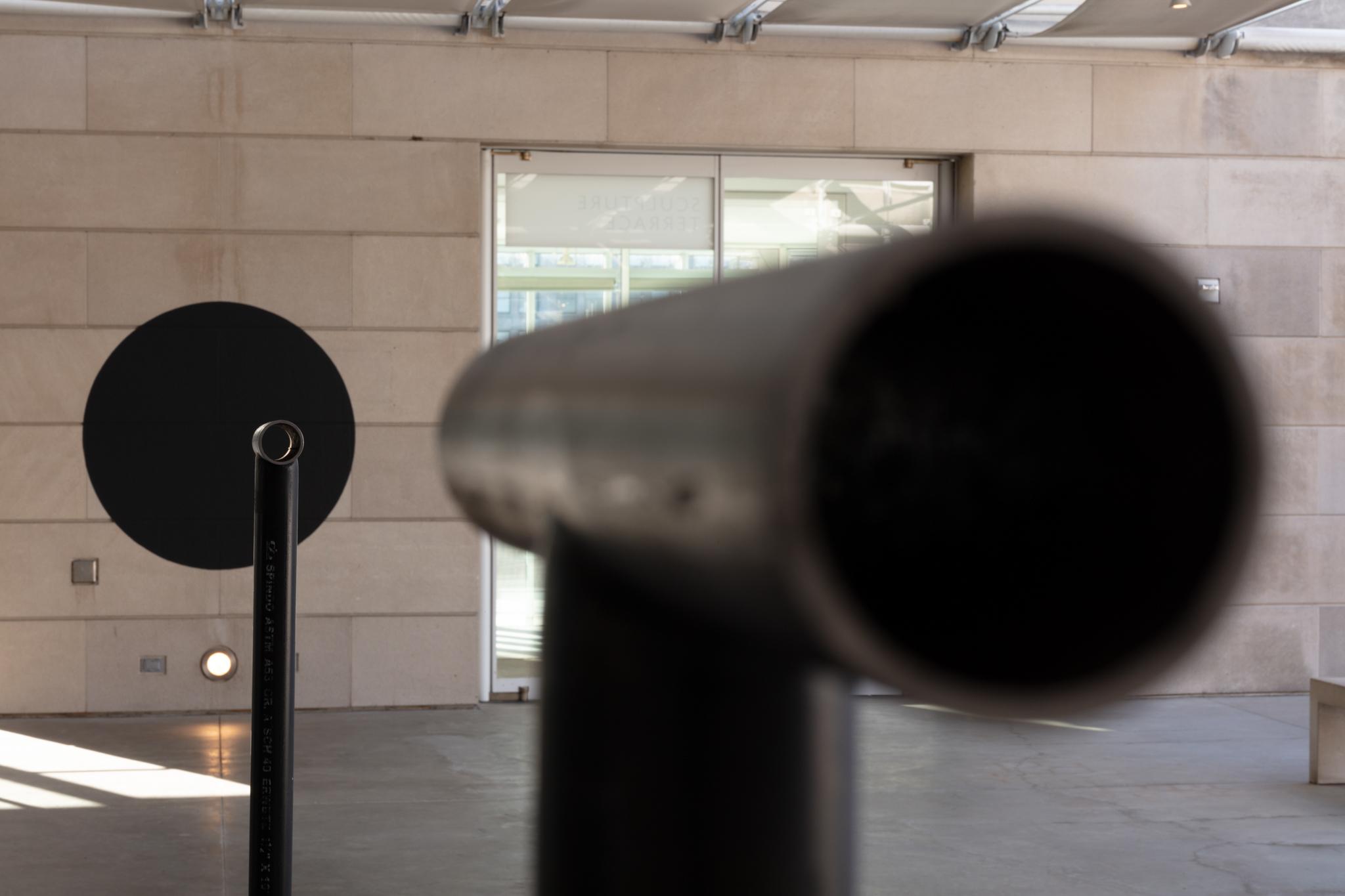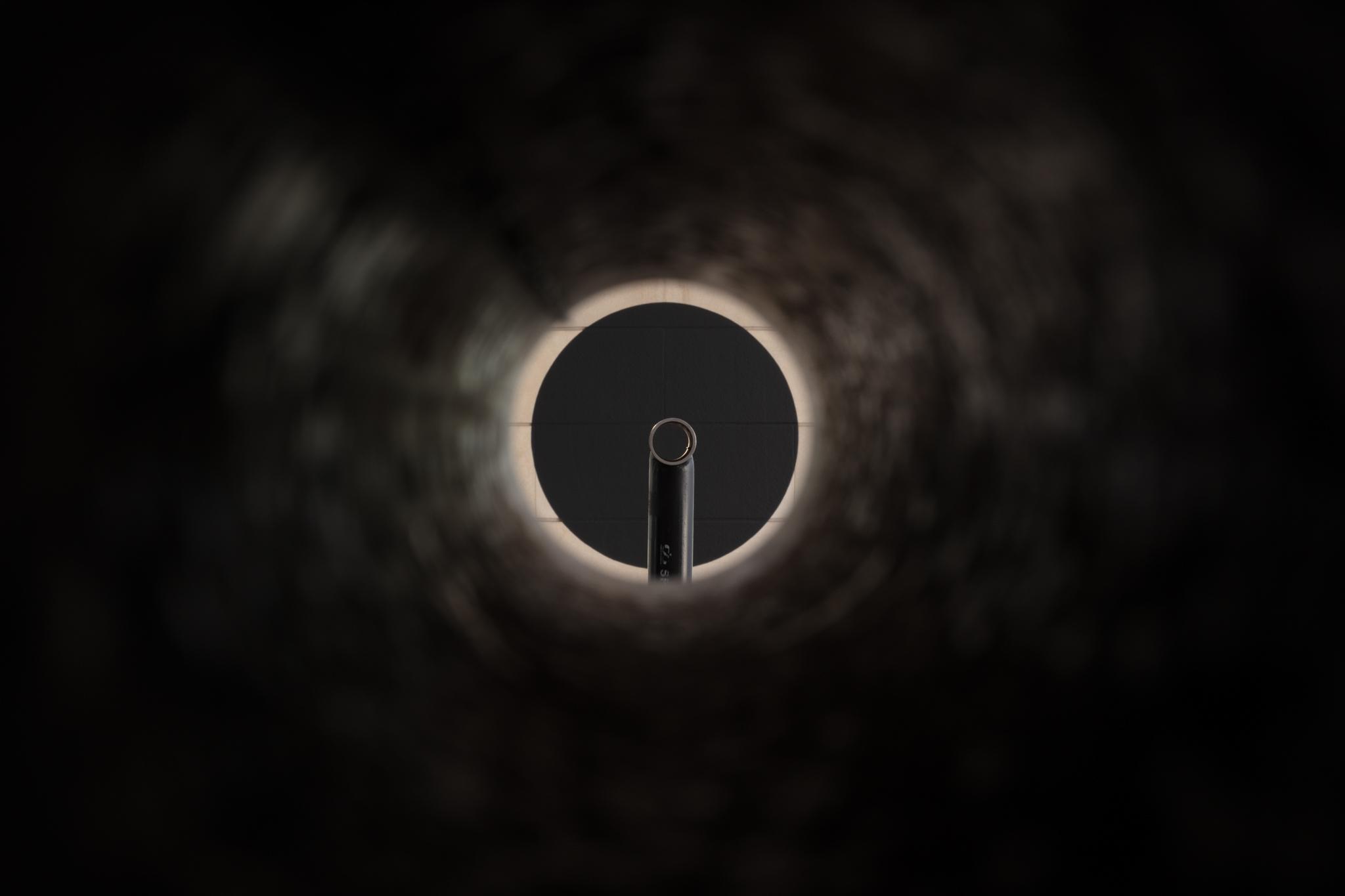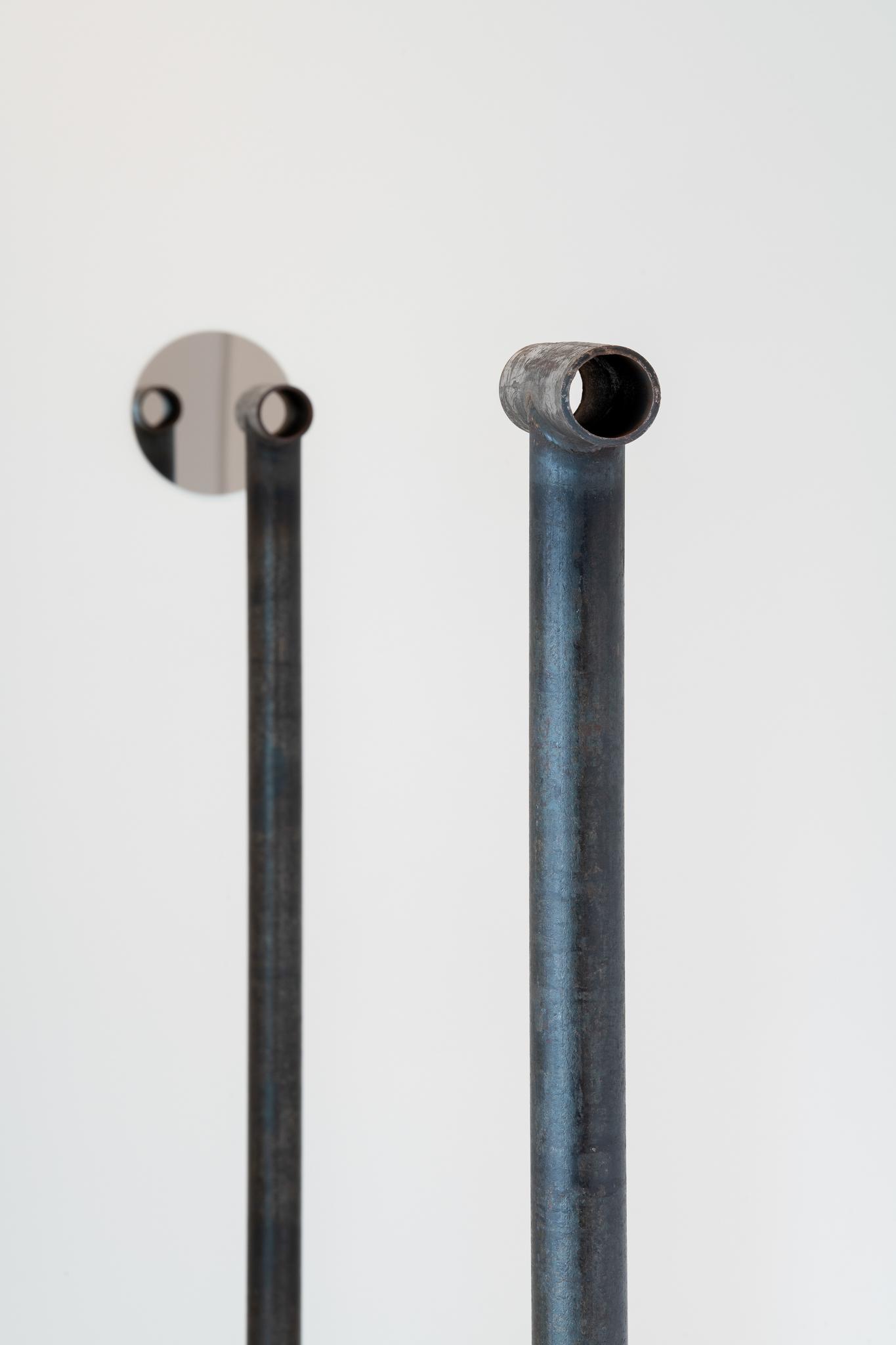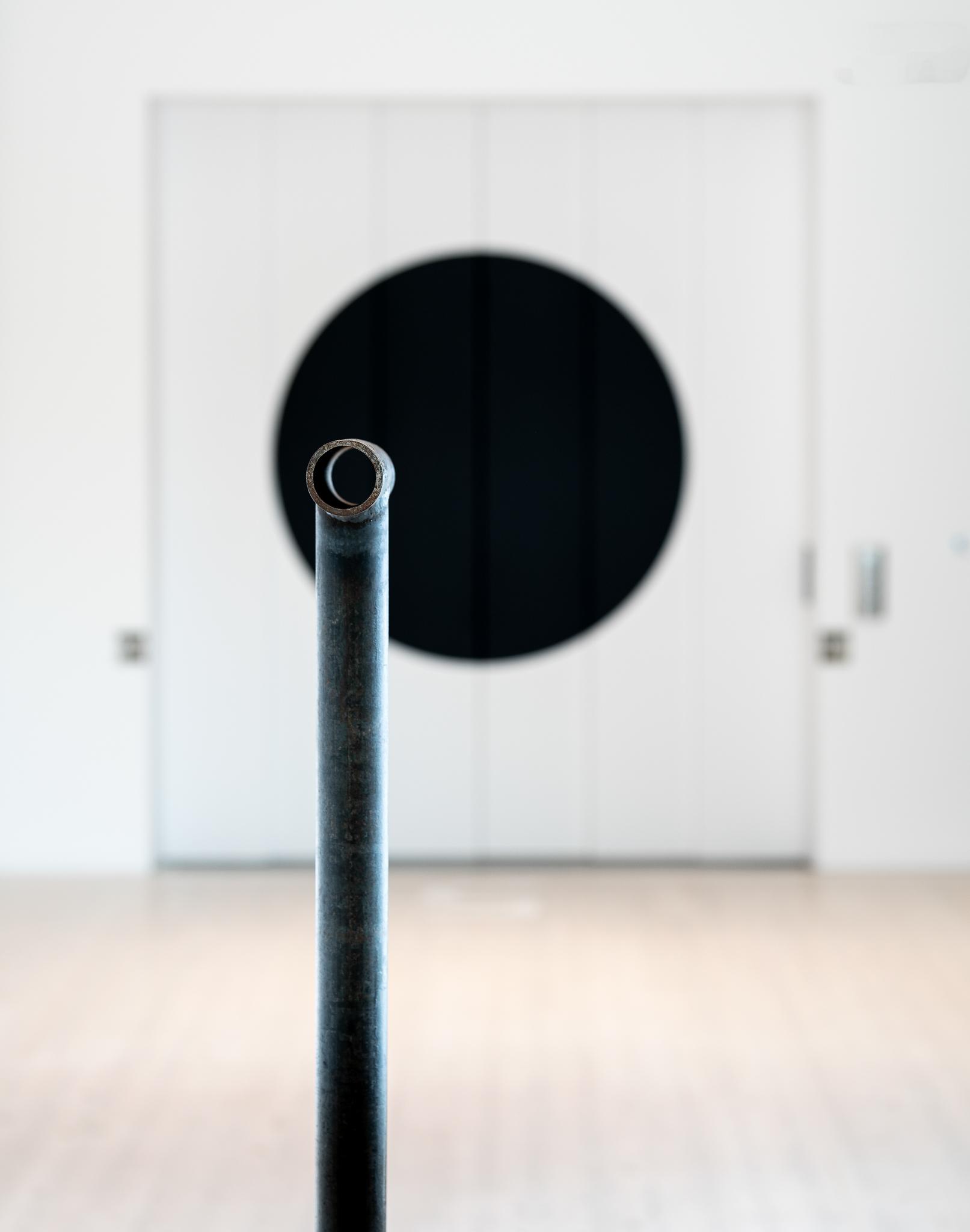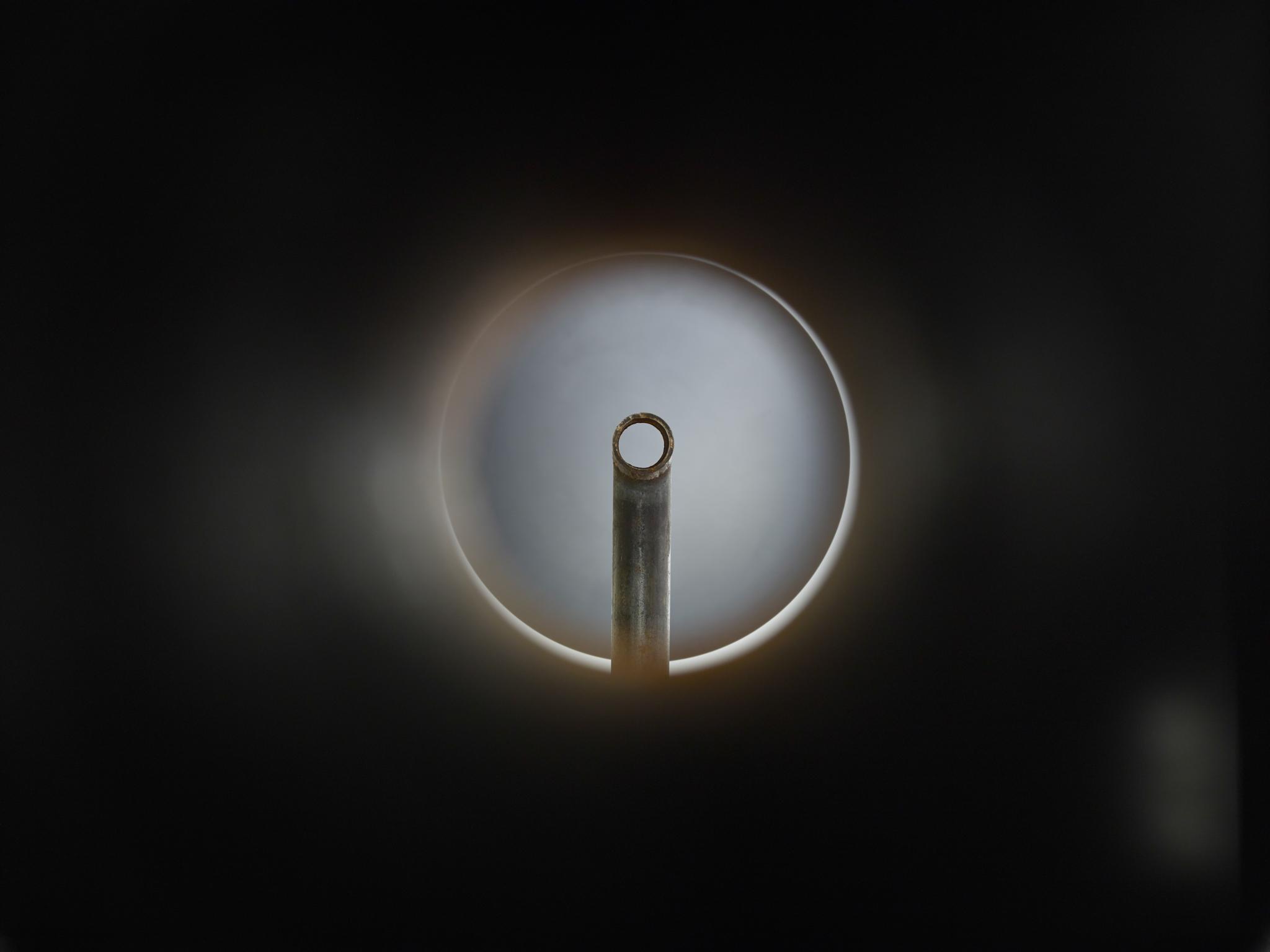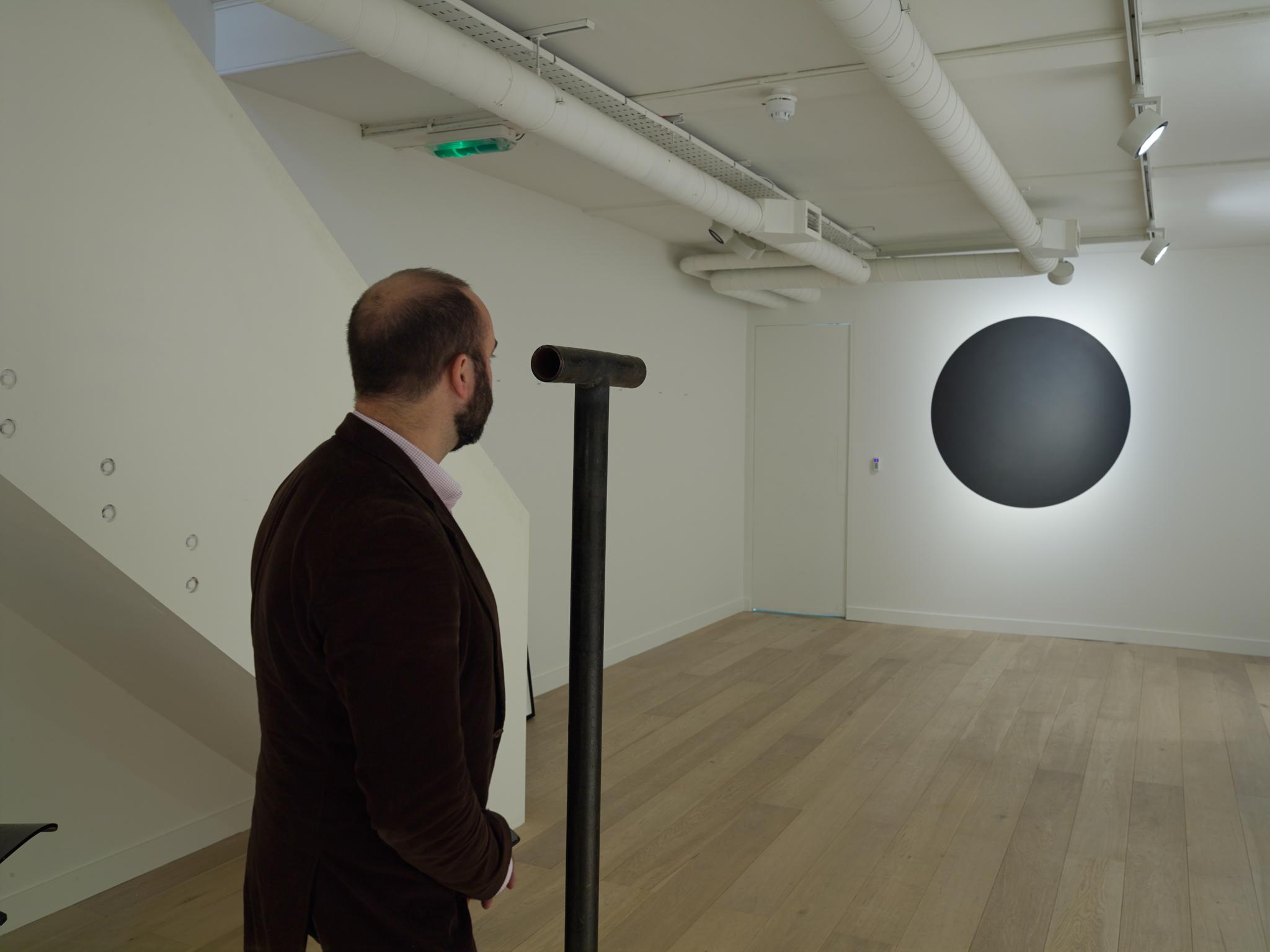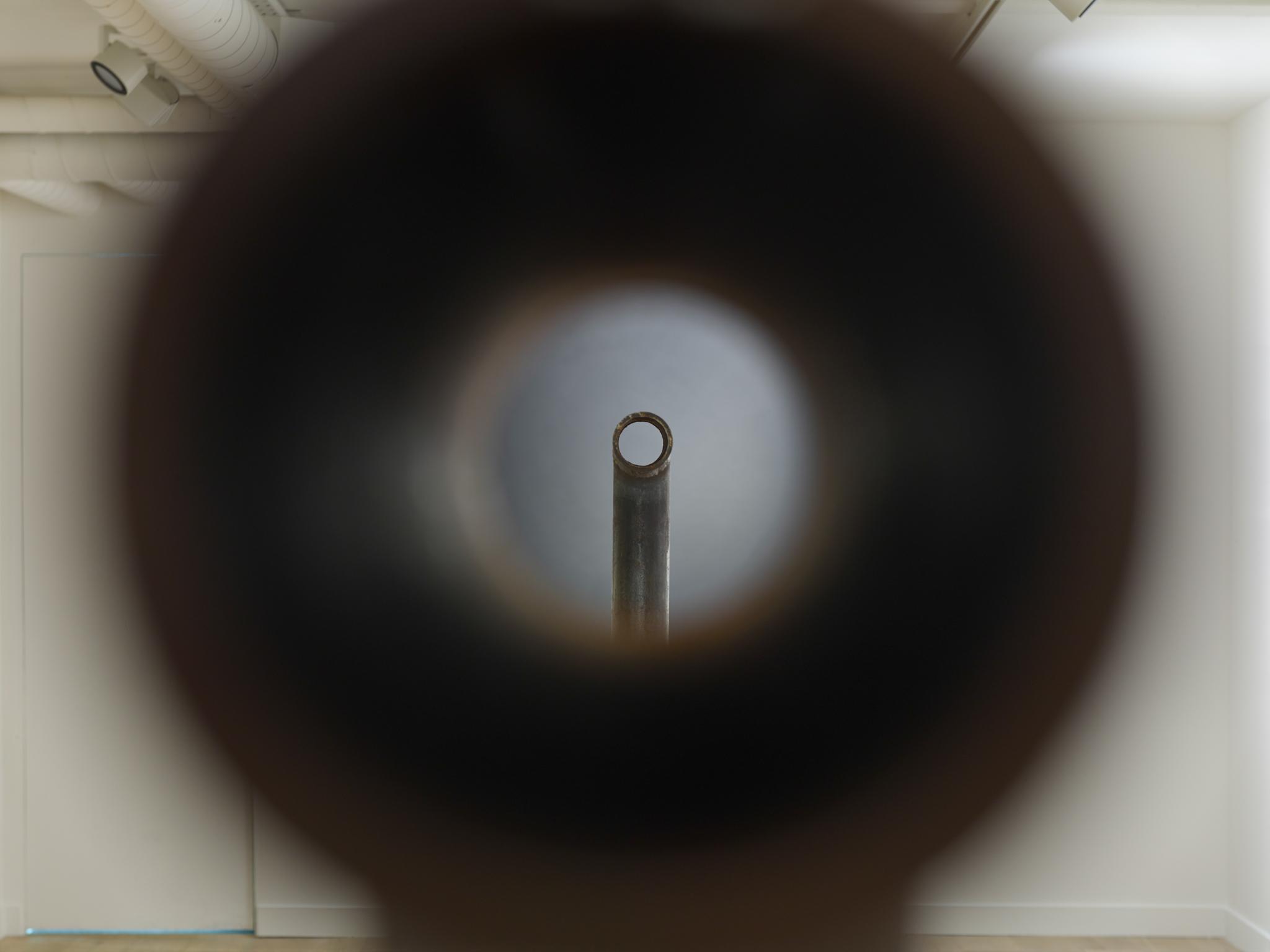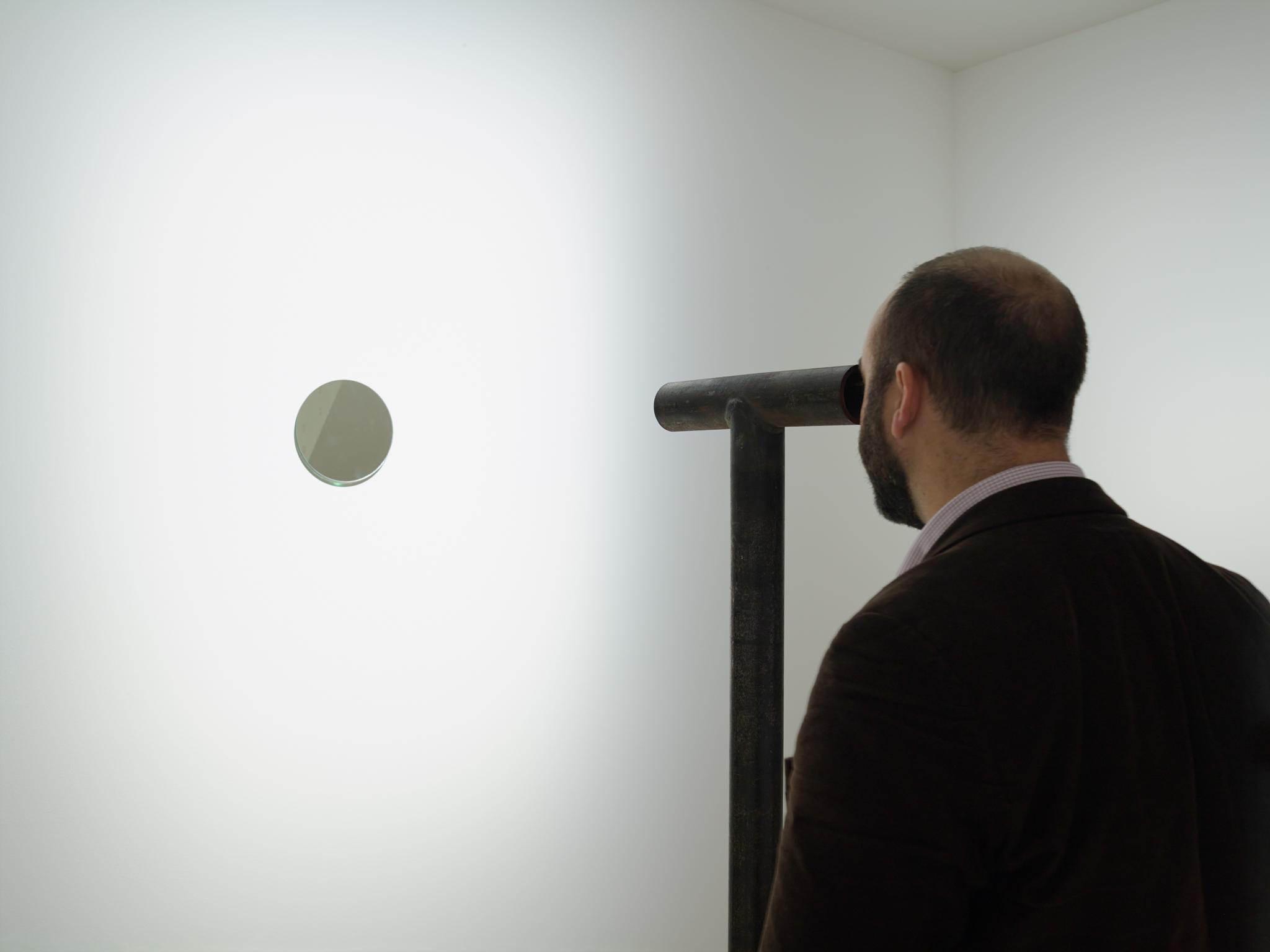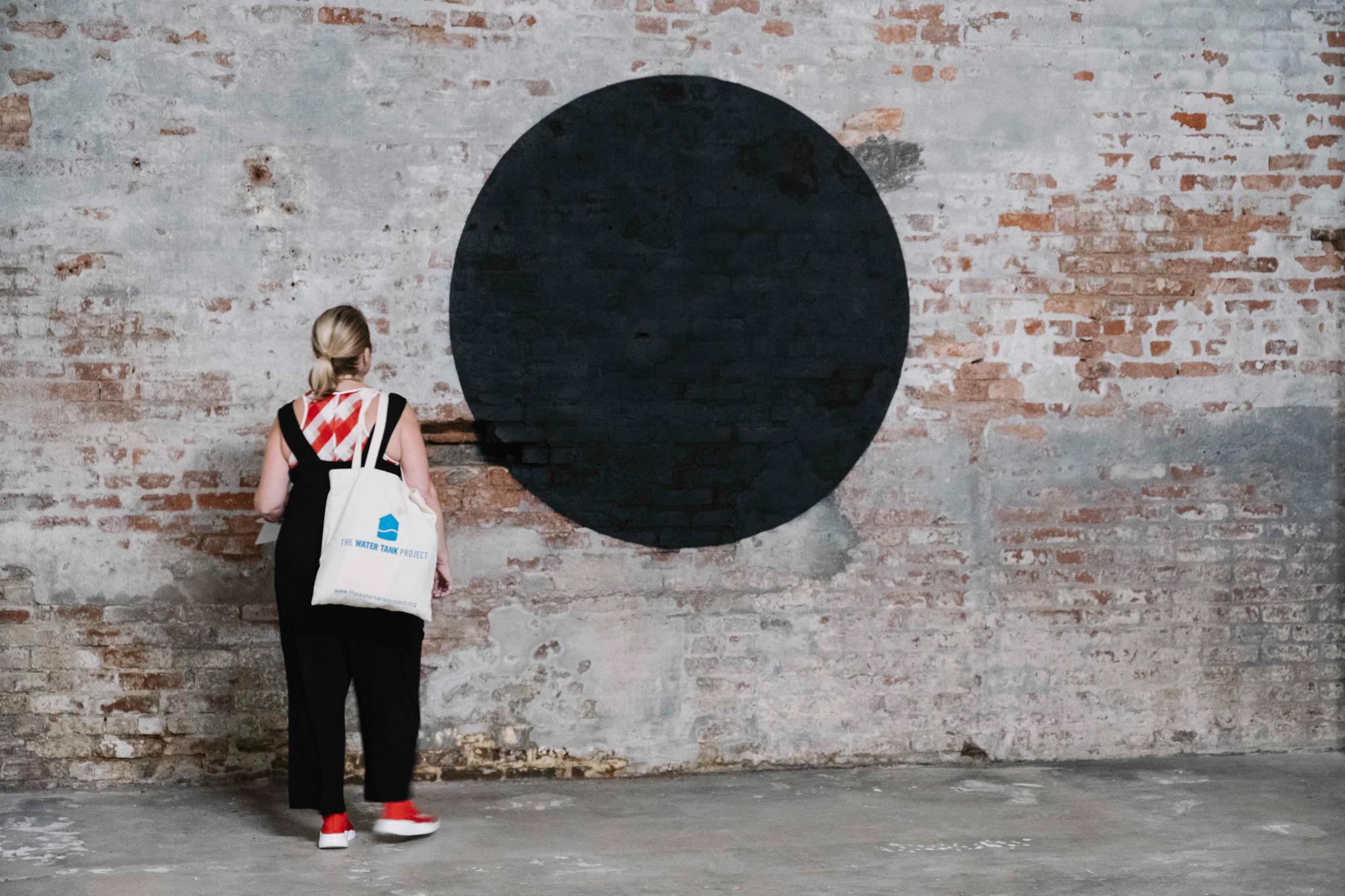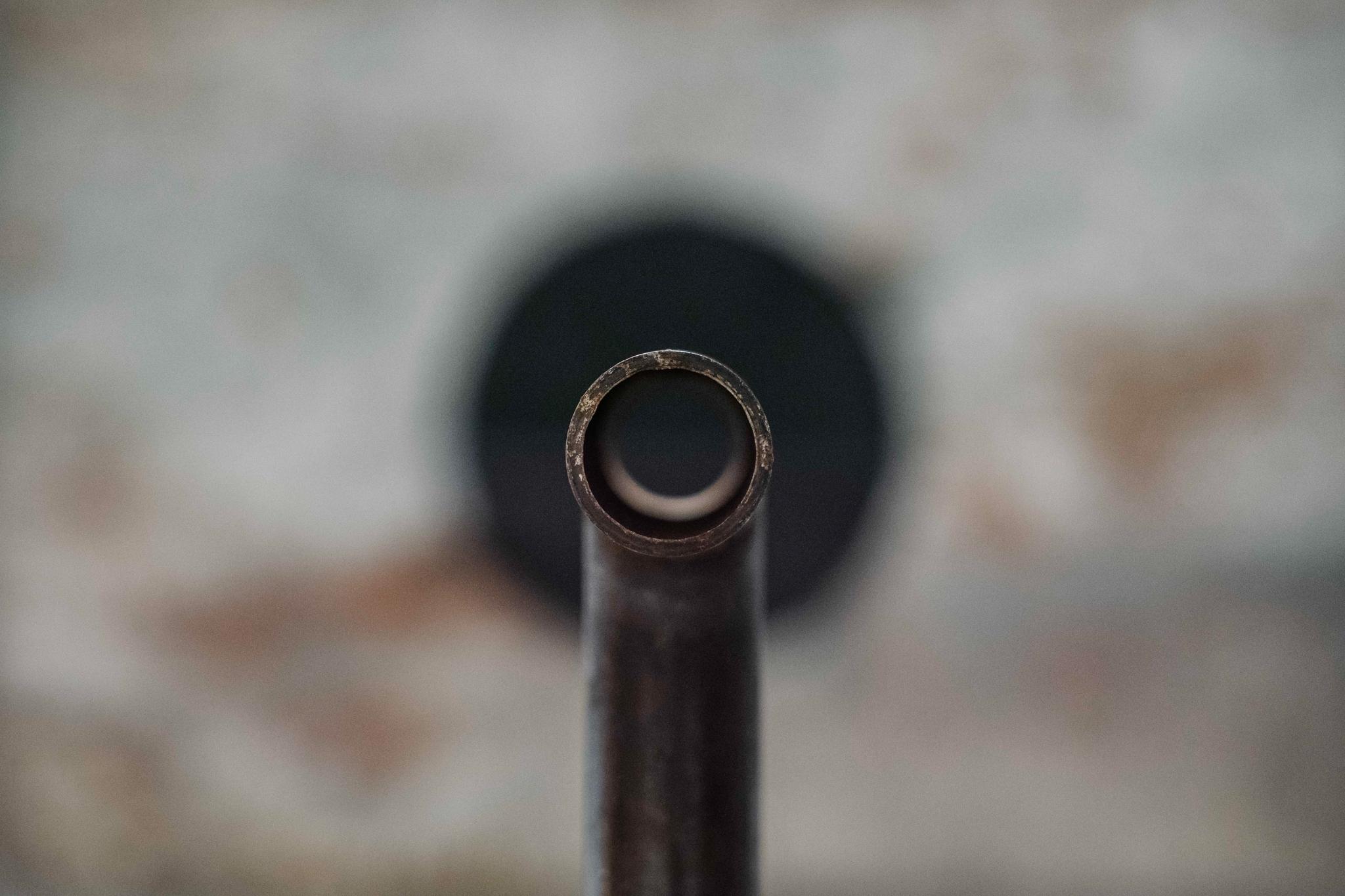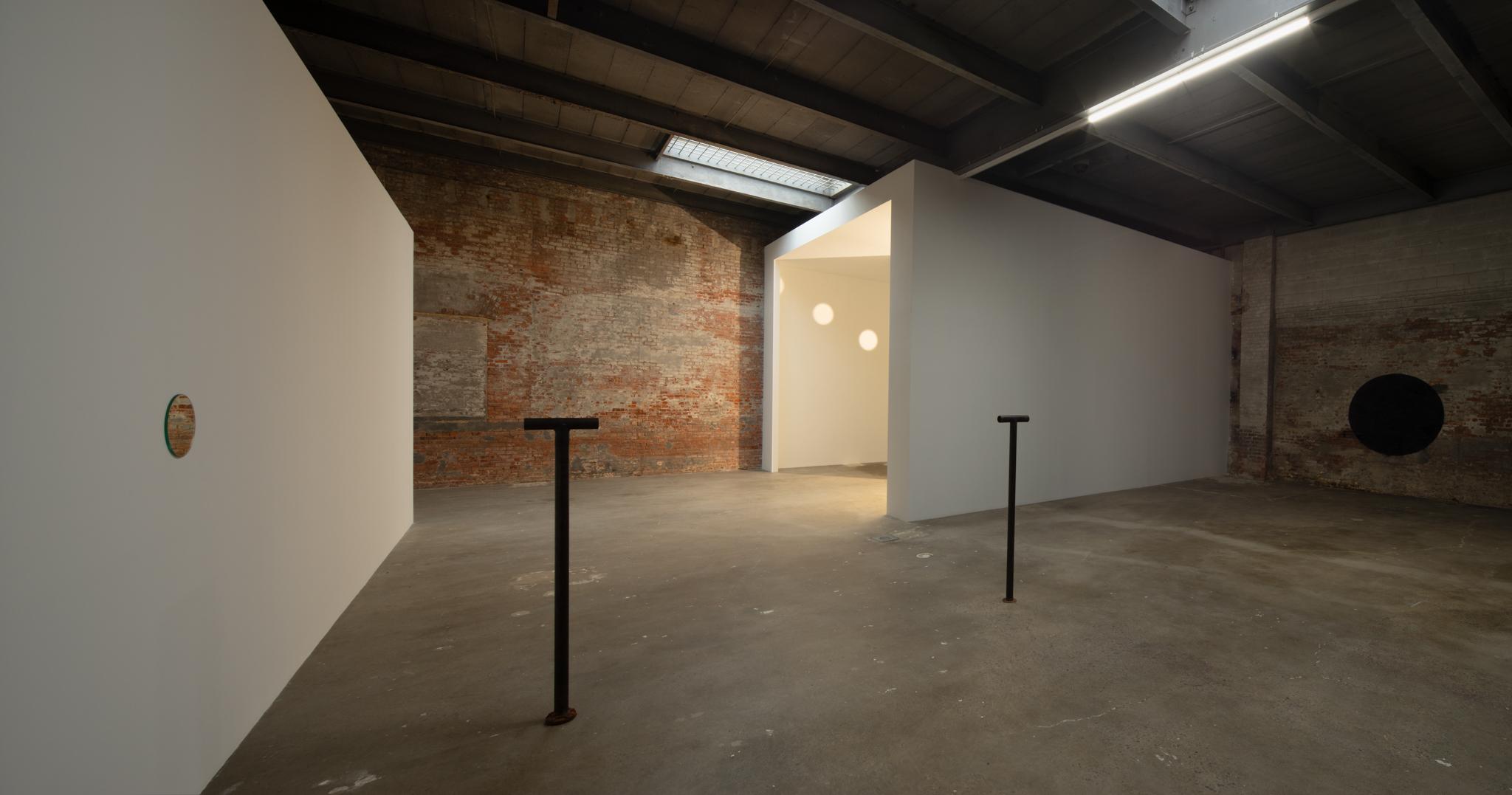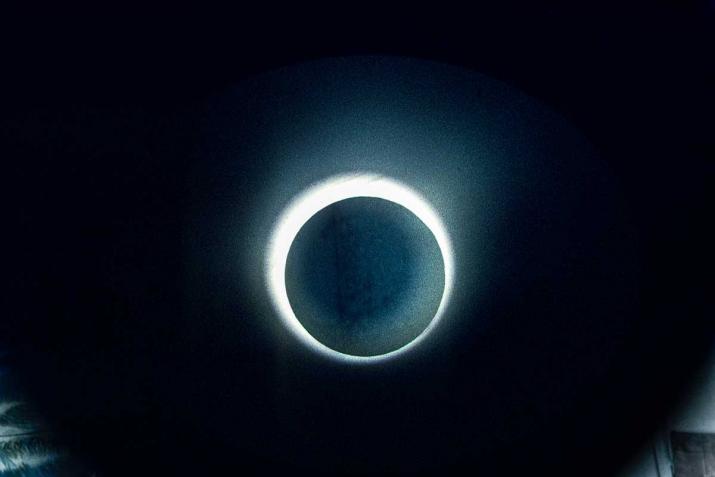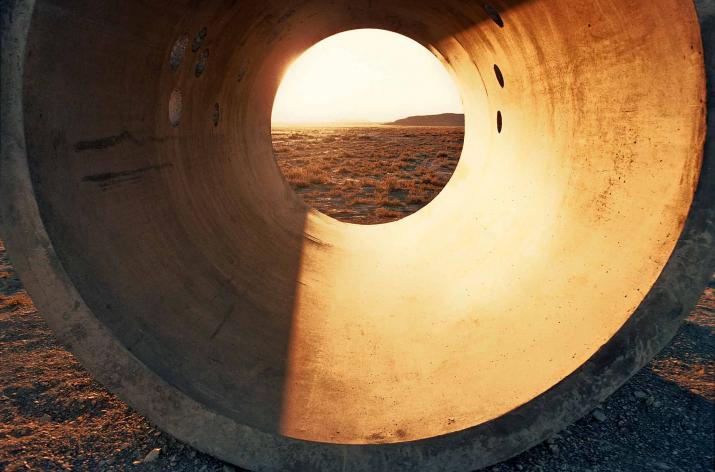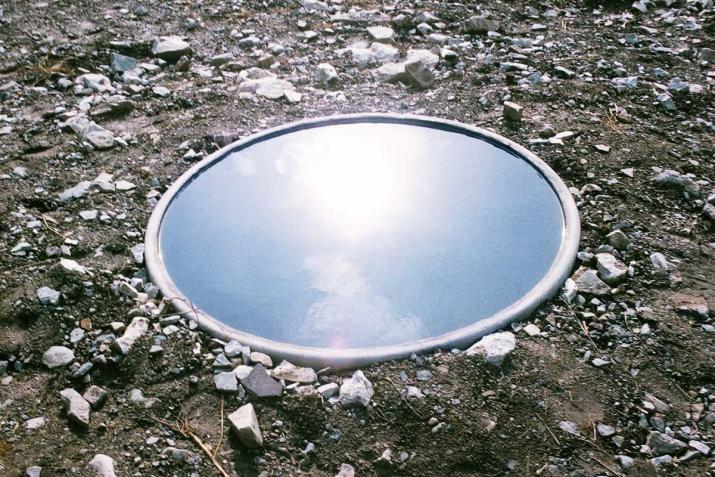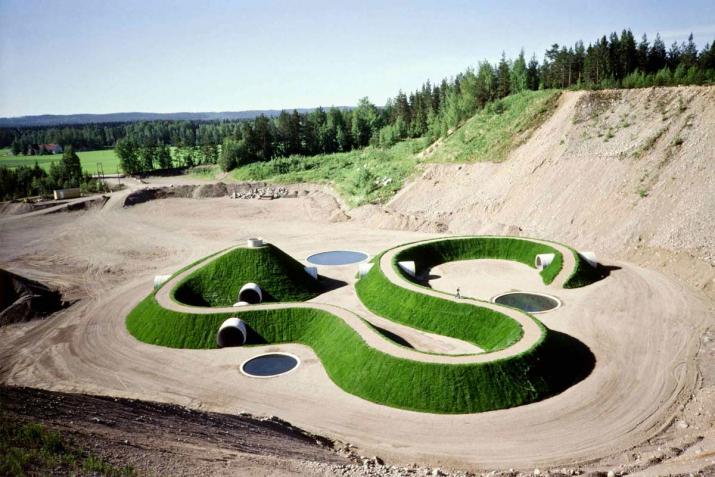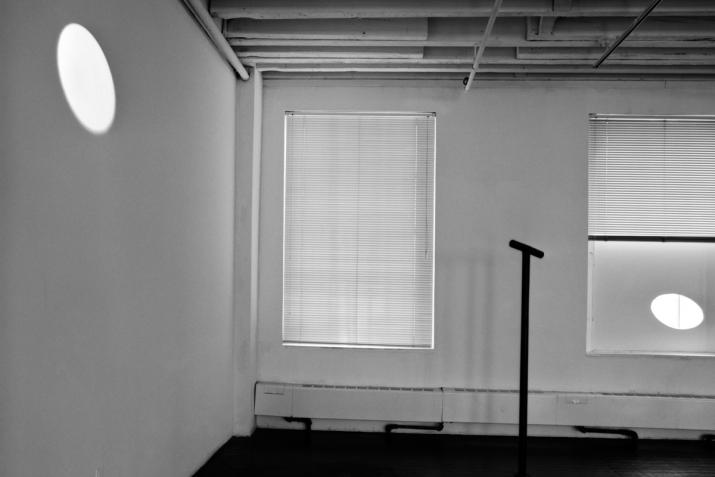
The Dialectics of Locator with Spotlight and Sunlight
1. Artificial Light vs. Natural Light.
2. Stasis vs. Change: The light intensity of the spotlight remains constant while the sunlight grows brighter or dimmer depending on the time of day and the weather, eventually ending in darkness after sunset when only a dark hole in the window and an oval of light on the wall remain.
3. Two-Dimensional Perspective vs. Three-Dimensional Perspective: Looking through the locator one way, vision dead-ends on the wall, the oval of light cast by the spotlight becoming a circle of light. Looking the other way, the window frame bar, which is visually off-center frontally, bisects the circle of vision. The white bricks of the adjacent building seem to lose depth and approach the window bar and the viewer, resulting in a change of depth perception.

